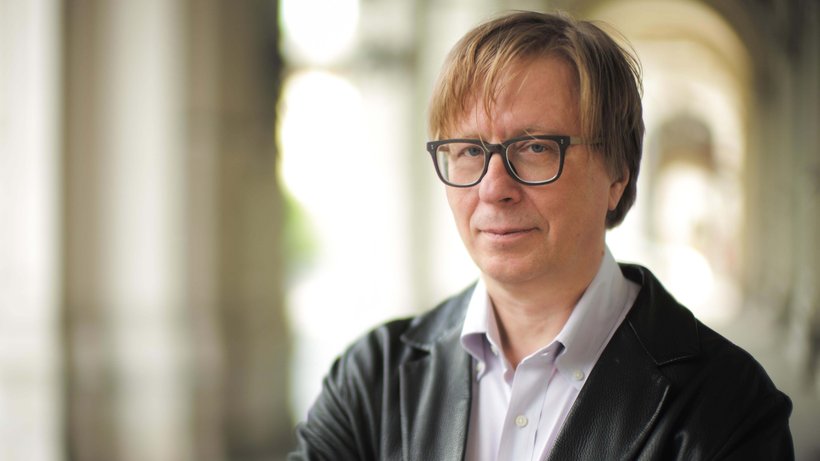If Georg Friedrich Haas’s in vain was a work of political protest when it premiered in 2000, in 2017 it’s a piece that reads more like a commentary – a disturbing musical documentary that captures nearly 20 years of escalating European tensions, suspicions and right-wing extremism. As harmonic consensus gave way last night to chattering confusion, musical certainty to a distorted multiplicity of possibilities, abstraction has rarely felt more pointed, more horribly specific.
But Haas’s most famous work brings its own baggage. Hailed internationally as a contemporary masterpiece and championed by the likes of Simon Rattle, it arrives now in the concert hall with a fanfare that feels at odds with the composer’s quiet, meticulous gestures. Whereas once you might have been in an audience for in vain, now there’s a sense of joining a congregation.
Was it times just a little too laconic?
You don’t hear in vain so much as experience it, thanks to the composer’s detailed choreography of light, which plunges the concert hall periodically into complete darkness. But this experiential, theatrical quality, coupled with the work’s own clear musical symbolism of light and dark, clarity and confusion, can come close to gimmickry unless carefully handled. A pre-concert Health & Safety speech mentioning ushers in night-vision goggles came perilously close to tipping it over the edge.
Performing the 70-minute piece as a stand-alone concert, the 24-strong London Sinfonietta and Brad Lubman rejected the opportunity for dialogue with other works (the possibilities for pairings are tantalising), presumably in deference to the concentration the Haas (pictured below) requires. His language of microtones tilts the musical world ever so slightly on its axis, and the loss of aural balance that results is at once unsettling and wonderfully exhilarating, especially when timed with the first descent into darkness.
 The work opens in media res – a writhing mass of muted sound that is the healthy concert-hall ecosystem. But the sudden arrival of the predatory brass sets the instruments scuttling urgently, tainting the tonality. The music (derived here from a series of memorised musical cues and units) gropes around in the darkness, finding new harmonic language for this unfamiliar environment. A harp summons the light back, introducing the work’s central section – a musical vision of pre-lapsarian beauty and innocence. The weird, instinctive logic of the harmonic series underpins music that radiates and vibrates with its own charged overtones: the music of the spheres with the volume turned suddenly up.
The work opens in media res – a writhing mass of muted sound that is the healthy concert-hall ecosystem. But the sudden arrival of the predatory brass sets the instruments scuttling urgently, tainting the tonality. The music (derived here from a series of memorised musical cues and units) gropes around in the darkness, finding new harmonic language for this unfamiliar environment. A harp summons the light back, introducing the work’s central section – a musical vision of pre-lapsarian beauty and innocence. The weird, instinctive logic of the harmonic series underpins music that radiates and vibrates with its own charged overtones: the music of the spheres with the volume turned suddenly up.
But it’s a vision whose hopes cannot be sustained. Tonality morphs and mutates again, and certainty is replaced with a nightmarish sequence of musical non-sequiturs and dead ends. We’ve come full circle in the musical maze and find ourselves back at the start, trapped in the same meaningless scuttling and scurrying. The music ends abruptly, as though a switch has been hit. Humankind cannot bear too much reality.
The Sinfonietta made light of the work’s technical demands, normalising them with their matter-of-fact skill to give us an experience that was closer to theatre than the risk-driven thrills of the circus. Was it times just a little too laconic? Lubman’s narrative arc certainly feels narrower than Emilio Pomarico’s did in 2013 at the work’s London premiere, also with the Sinfonietta. Perhaps the difference is the weariness of current politics, the acceptance that comes from another four years of protesting in vain.














Add comment